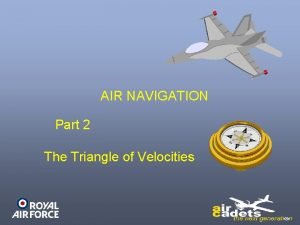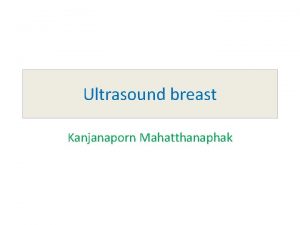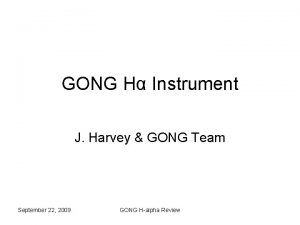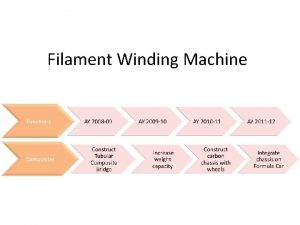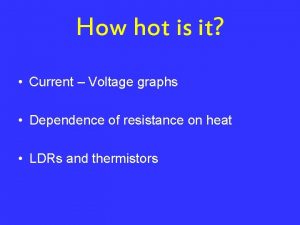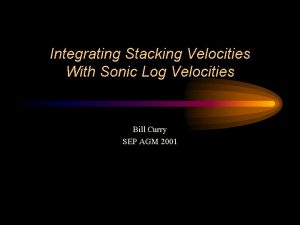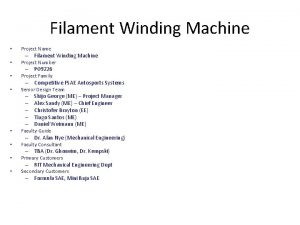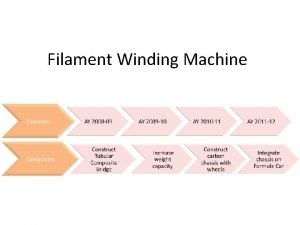The Halpha radial velocities of an arch filament









- Slides: 9

The H-alpha radial velocities of an arch filament system in solar emerging flux region Shino Kawahara Rakutou High School KYOTO

On emerging flux region : EFR § In H-alpha images, we can observe black bands between sun spots pair in early stage. § It is believed that these black bands are emerging flux tubes. § These tubes were made in convection zone in solar interior, and rose to the surface. § These areas are called as emerging flux region (EFR) , and black bands as arch filament system (AFS).

§ It is believed that there are flux tubes which move upward about 10 km/s at the center, and the downward moving of about 30 km/s to 50 km/s at both ends of the arch. § Then we examined distributions of velocity in AFS by means of Doppler shift measurements of H-alpha lines.

Observation and Analysis § Using the 70 cm coelostat telescope and the high dispersion spectrogram, we observed the solar surface phenomena at Kwasan observatory on 10 th and 11 th of Aug. in 2006. § We observed sunspots group NOAA 0904. § We performed Doppler shift measurements of H-alpha lines of each AFS’s. § We derived the radial velocities of each AFS’s from following formula Δλ/λ=V/c (Δλ: Doppler shift of H-alpha line center, λ: H-alpha wave length, V: radial velocity, c: velocity of light)

Fig. 1 The spectral image of sun spots. NOAA 0904 (left), H-alpha image of the slit mirror of the spectrogram (right) Blue Red Observing time of both figures is 2: 25 on the 10 th of Aug. in 2006(UT)

H-α center Relative intensity Shortward (blue) Wavelength (in pixel units) Longward (red) Fig. 2 The spectral trace was made from Fig 1.

Results § The three radial velocity observations obtained between 2: 25 to 2: 40 10 th of Aug. show; The eastward;No observation. The center;-14. 5 km/s、-15. 4 km/s The westward;+0. 7 km/s § The mean radial velocities from 12 observations obtained between 0: 42 to 1: 56 11 th of Aug. show ; The eastward;+2. 1 km/s (± 1. 13 km/s)、 The center;-13. 1 km/s(± 2. 8 km/s)、 The westward;-0. 5 km/s

Results 2 Line of sight The solar surface Mean value -13. 1 km/s Mean value -0. 5 km/s Sun spots Mean value +2. 1 km/s AFS The radial velocities of upward flux of central region are observed higher values among three regions. The other hand, the radial velocities of downward flux of each ends are observed not so high.

Acknowledgment § We thank Drs. Shibata, Kurokawa and Ishii, and staffs of Kwasan observatory. This work was supported by SPP/JST (2006).

